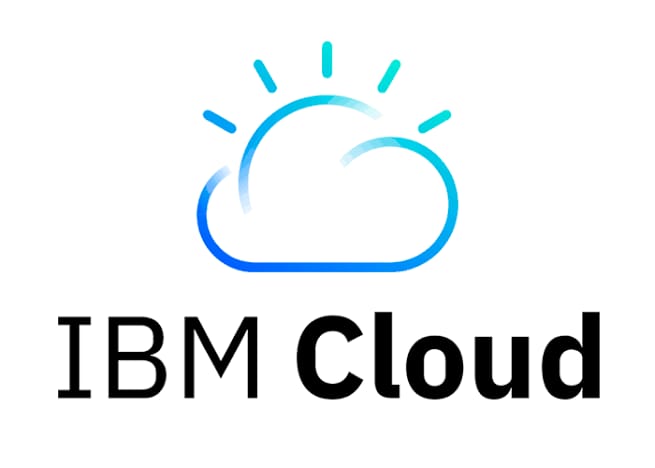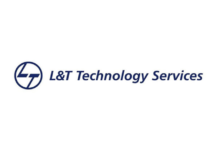In an exclusive interview with Fortune India, Gaurav Sharma, the computer giant IBM, opens up the company’s growth plans and reflects on cloud and A.I.
The International Business Machine Corp. (IBM) is betting heavily on hybrid cloud and artificial intelligence. From the purchase of the Red Hat tech business in 2019 to the latest acquisition of Instana, IBM appears to have set the pieces in place for this approach. CEO Arvind Krishna said that the business is laser-focused on a $1-trillion hybrid cloud opportunity, and IBM thinks that they have the lead with Red Hat. In reality, in several ways, the IBM-Red Hat deal laid the foundation for the separation of the business into two pieces. At the beginning of October, CEO Krishna said that the computing giant will spin off a unit that handles IT networks and accounts, while IBM will concentrate on cloud computing and artificial intelligence (A.I.).
The recent decision to break the business into two also stems from shifting consumer preferences for application versus infrastructure services. It has been announced that NewCo will be the managed technology services firm, while IBM will be the hybrid cloud and A.I. Business. Company. Hybrid cloud is effectively a type of hybrid computation, storage, and services ecosystem that depends on both private and public cloud services.
Although the change will take around a year to come into practise, the result, IBM claims, will be two industry leaders with oriented strategies and missions.
The partnership with the technology community is an important part of IBM’s development plan. In August, IBM committed to spending $1 billion in other cloud-based businesses, including third-party tech suppliers and digital IT suppliers, to extend the business environment of its hybrid cloud network. Over the past six months, major system integrators including Infosys, Wipro, Tata Consultancy Services (TCS), Software Mahindra, EY, HCL, Deloitte and Persistent Systems have entered the Hybrid Cloud community of IBM.
According to Gaurav Sharma, vice president of IBM Cloud and Cognitive Applications (IBM Software Laboratories, Global GSI Alliances, and IBM Cloud Paks AP), the organisation has had a good partner structure for decades.
In an exclusive interview with Fortune India, he spoke in depth about the acquisition of Red Hat, how the pandemic increased cloud adoption, and why businesses need a hybrid cloud approach, among other things.
It has been more than a year since you acquired Red Hat. How has the acquisition helped your cloud business?
I’m going to start with the way the customer demands are shifting and it’s always been a driver for some of the decisions that have been taken—whether it’s business pace, whether it’s versatility in its nimbleness, or whether it’s constant creativity. The second change we’re witnessing is a digital revolution driven by hybrid cloud and artificial intelligence. Just about 20% of the workloads had migrated to the cloud. When IBM and Red Hat came together, they built this whole area for a hybrid cloud. It has helped IBM—which brings a massive customer base and product base—and Red Hat, which powers our cloud infrastructure, to essentially create a brand new hybrid cloud model that generates and provides value.
What we’ve found through some of our recent estimates is that the hybrid cloud will offer 2.5 times more benefit than a single cloud, whether in terms of digital efficiency (where we’ve seen the value rise almost twice), or developer quality, or cost-efficiencies in technology, or security enforcement, or even supplying customers with a competitive choice. The preference and power remain with the consumers, too.
So from an architectural point of view, as clients wanted to drive their digital transition, IBM and Red Hat together accelerated the momentum. From a company standpoint, we’re getting a lot of traction around here. In reality, in the last year, Red Hat has added two of its biggest customers.
IBM has now added a number of customers, and for the last 12 months our cloud run rate has been about $24.4 billion. Cloud and data networks rose by 20% in Q3 of 2020. But that gave us a big share in the $1.2-trillion market, which IDC estimates will be the hybrid cloud market.
Digital transformation intensified through the pandemic, allowing consumers the option and power to make us a one-of-a-kind network. All is searching for a new cloud infrastructure. We’re moving from workloads that can run on premises, on a private cloud, on a public cloud, and when I say a public cloud, it can be any multi cloud by itself.
How did the Covid-19 pandemic impact the digital transformation journey of your clients? What are the lessons to be learned from the pandemic and the home scenario work that has emerged?
I’m going to give the answer in two parts: one general and one example that I’ve come across. I believe customer behaviour has changed since the pandemic—it has been a little bit more careful. Yet, oddly enough more digital. The consumer expectations are clearly the same: sprint to the market, flexibility, creativity, etc. But if I categorise it into parts, it will be risk reduction, cost management, and digital transformation around hybrid cloud and A.I. Even when it comes to optimising prices, it’s pretty much cloud and A.I. that we’ve seen growing. And of course, a digital revolution that aims to offer a bit more financial stability and lower running costs. In the long run, I assume that digital acceleration will not only persist, but will also accelerate.
On the second section, I’m going to take you through an example of a financial institution in India with a huge data centre where more than 300 people used to operate, which was guarded and firewalled, to make sure that nobody could take out any sensitive data. Yet when the pandemic struck, only 5%-10% of employees were allowed to travel to the data centre. All they wanted was a computer desktop that they provide safe access to.
In the first week, we focused on the concept of topology, governance, etc., we improved cloud protection, added additional policies, etc. We’ve been spreading their physical IT through our cloud. And it was the beauty of it. In two-three weeks, nearly all workers were able to view stuff on the cloud in a very secure manner. And the right governance mechanisms around it. For that we’ve certainly expanded the capability of the cloud, we’ve got to do a lot of optimization and automation to make sure that dynamically you can adjust policy, and we’ve usually seen about three times the growth of our cloud itself.
Learning is that an organisation should really think about getting a really good hybrid cloud plan, so companies will have some mission-critical workloads on the premises, some on the private cloud, some on the public cloud, and other workloads running on different clouds themselves, so the advice that comes from the customer side for them and for others is to have a ro. In the workloads, as much as possible.
The work from home scenario has led to the necessity of moving mission-critical workloads to the cloud. Did this lead to augmentation of capacity? How did your cloud infrastructure deal with the increased workload?
Yeah, we’ve seen a huge increase in cloud usage trends. We were almost operating at 80 percent-90 percent capacity a number of times. And then you need to improve the auto-scaling potential with the right automation and new policies. It also has to be done for the kind of workloads that are landing—as I said we’re getting more mission-critical workloads. That’s where you need a high level of encryption, and that’s where our cloud is a huge differentiator. For example, customers’ faith in the transparent and stable cloud that we offer was strong. And in terms of scaling, yeah, we’ve been able to scale very rapidly, and we’ve seen consumption increase at least two-three times, across all of our clouds.
What is IBM’s relationship with global system integrators (GSIs) in India?
IBM has a good partner structure that has been in operation for decades. What we’ve done now is further enhanced, particularly because there’s a robust platform game, either an architectural one or a technology one. It’s easier to scale the platform as we exploit the ecosystem. The ecology is about preserving the energy balance. We have been used to working closely with the top GSIs, especially the Indian and global GSIs. What we have learned is that partnership with the environment would be the path to value for our customers. Essentially, we assume that the importance that we value to our clients and partners will drive IBM’s success. As far as GSIs are concerned, we collaborate with them at multiple stages, whether in terms of Go-to-Market (GTM), through the strategic expertise we have through commitment funds or GTM associates.
It’s a very thriving partner community that’s been in existence, and has now been expanded. Earlier this year, we revealed that we will spend $1 billion in our hybrid cloud ecosystem to provide an accelerated and more flexible way to co-develop best-in-class GTM games, create partner playbooks, build a funnel of shared solutions, generate demand, and most importantly, access to our technological experts. We have a laboratory located in India, known as the Global Device Integrators Lab. It is made up of very senior engineers, technical experts, advisors and corporate growth executives who work together to create collaborative strategies, meet the GSIs’ knowledge centre and guide policy leadership along with the GSIs. And this is a perfectly firewalled sort of lab, which ensures that if a certain group of people work on one GSI, another collection of people will work with the other GSI.
The second aspect is the technological experience, where we use a lot of our developer supporters, both domestically and internationally, so we have a very active developer advocacy community, and surprisingly both the GSI Lab and the developer advocacy group reside inside the software laboratories themselves, so you would believe that we are incredibly close to the product development groups.
For example, TCS has set up an enterprise cloud infrastructure team with technical personnel from both companies and has established two interesting solutions. One is known as ‘AiR (AI Repository)’ and will accelerate the acceptance of AI; and to help consumers simplify and easily modernise their integration platform with state-of-the-art accelerators and software, TCS has created a ‘Jumpstart Kit for Integration.’
Infosys was the first to enter the community, and we’ve been working on the transformation and modernization of all IBM Cloud capabilities. We introduced the Wipro IBM Novus Lounge with Wipro. It’s an engineering hub and we’ve already begun to focus on collaborative solutions.
So we’ve got a good emphasis on the developer community. To win the architectural battle, we’re going to have to win the hearts and minds of the developers as well where developers can explore, try, play, adopt, and suggest decision makers. We have a system in place to communicate with developers; it consists of three parts: code, content, and community.






